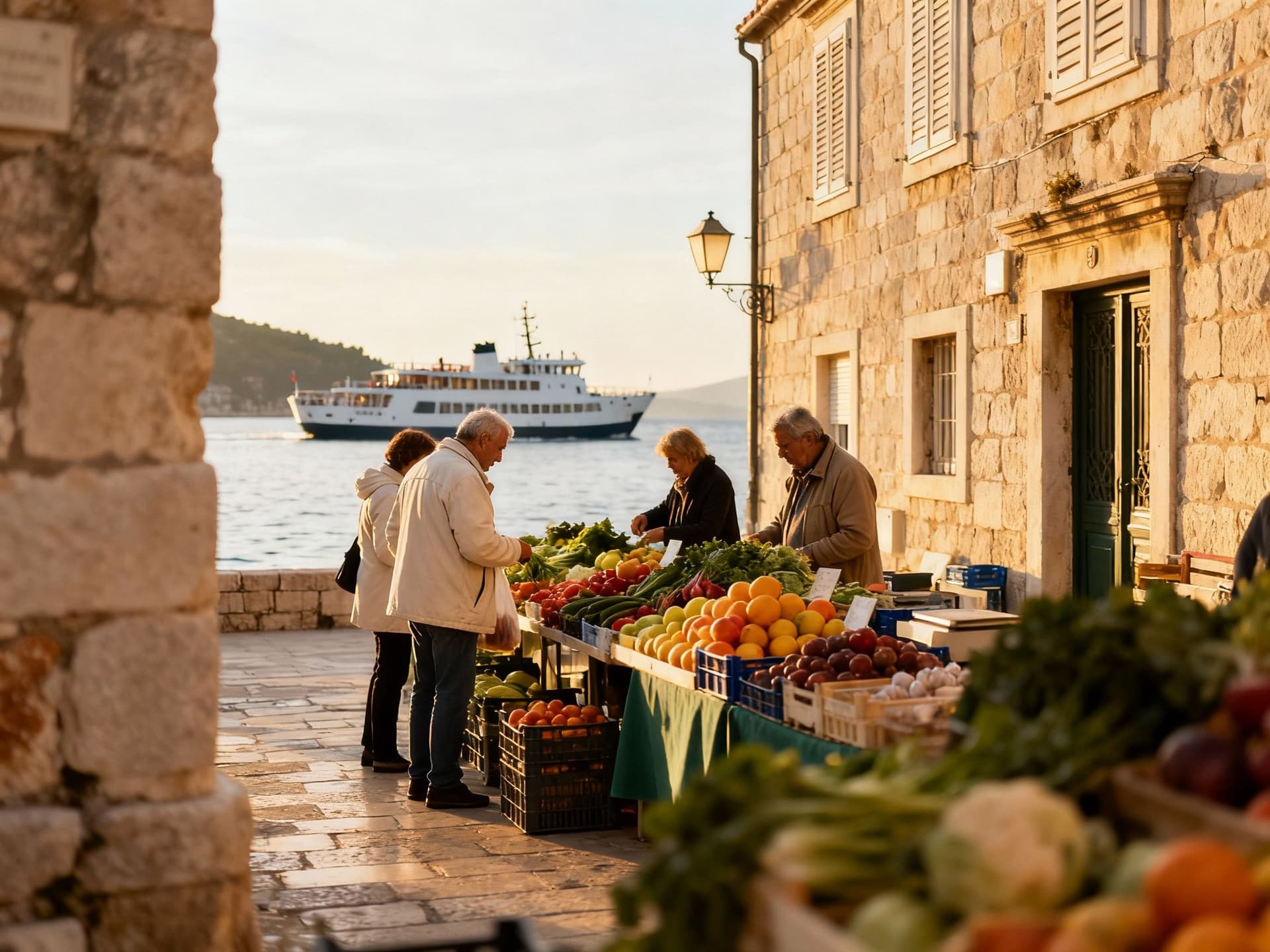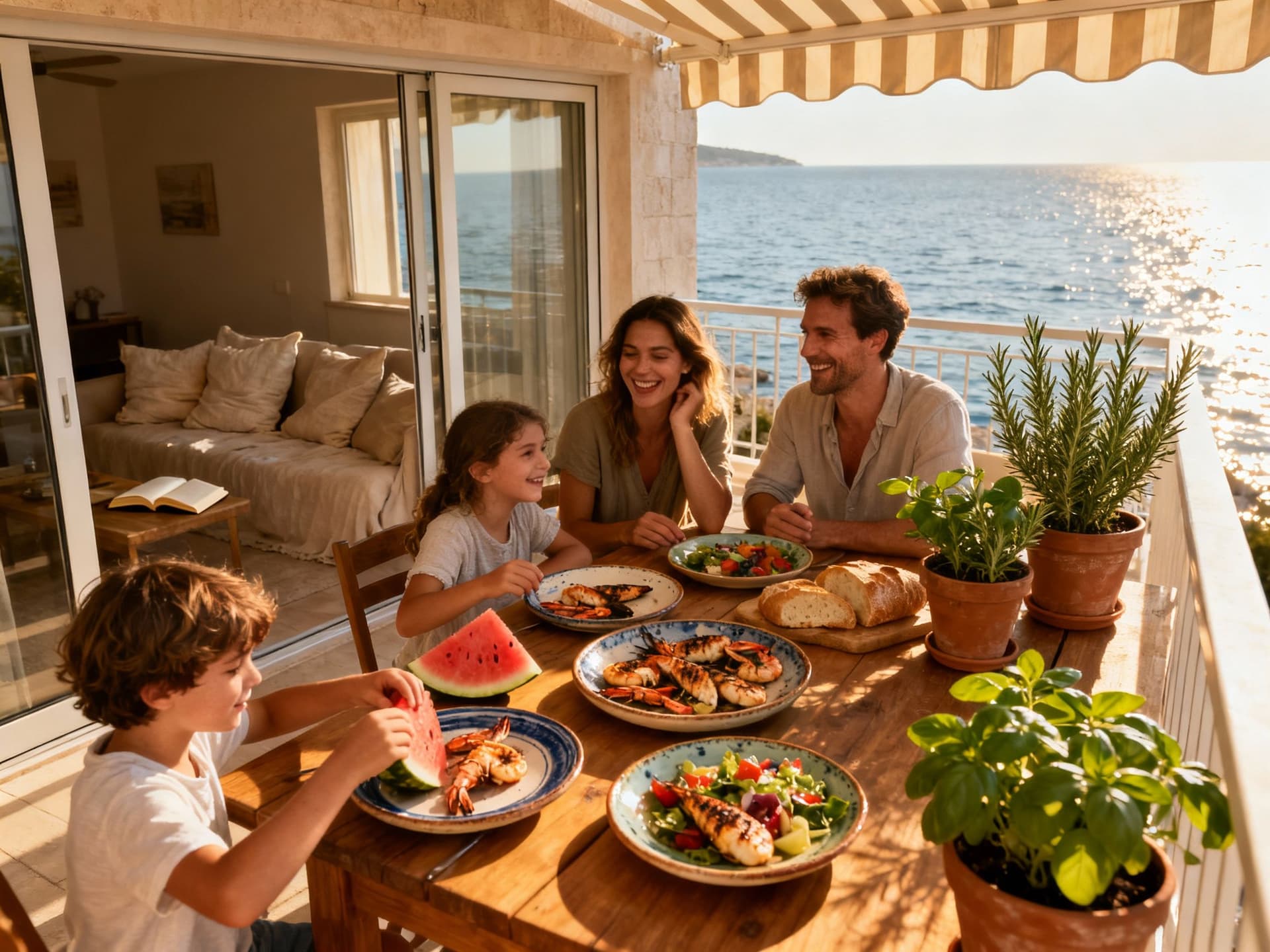Croatia: Lifestyle Premiums vs Real Net Yields
Croatia’s romance inflates prices; translate lifestyle appeal into reliable net yields by using local transaction data, seasonality stress tests and updated tax rules.
Imagine waking up to espresso steam in Zagreb’s Tkalčićeva, then catching an afternoon ferry to a pebble cove near Hvar. Croatia feels like a series of lived-in postcards: stone alleys that hum with neighbourhood markets, seaside promenades where restaurants trade in catch-of-the-day, and small inland towns whose pace invites long lunches. That rhythm — intense tourist season followed by quiet off-season — shapes where prices climb, where yields appear, and what kind of property actually performs as an investment.
Living the Croatian life: what you actually buy into

Croatia’s lifestyle is a compound of Mediterranean sun, Adriatic winds and urban energy in places like Zagreb. Buying here isn’t just about square metres — it’s about access to markets, ferries, terraces that rent in summer and quiet heating bills in winter. For an investor, that means choosing property types and locations that match seasonal demand and local living patterns rather than postcards.
City pulse: Zagreb, Ilica and Tkalčićeva
Zagreb offers year-round rental clarity: students, corporates and longer-term tenants keep demand steady beyond the tourist months. Walk Ilica for everyday commerce, and Tkalčićeva for cafés that stay busy through winter — these street-level signals predict stable long-let yields. Expect higher per-square-metre prices in central districts but better occupancy stability compared with coastal holiday zones.
Coast & islands: Split, Hvar, Dubrovnik — seasonal machines
Coastal towns switch from sleepy to sold-out between May and September; that spike pushes asking prices and short‑let revenue but creates off‑season vacancy risk. Dubrovnik and Hvar post premium per‑m² values (often multiples of inland cities) because supply is constrained and tourist demand is concentrated. That makes gross yields on short lets appear attractive — but net yields after management, vacancy and regulation can be much lower.
Making the move: translating lifestyle into yield

Market data from government statistics and industry listings shows hefty recent price growth: house asking prices rose sharply through 2022–24 and house price indices recorded double‑digit annual increases in parts of the country. Those headline rises alter yield math — the denominator (price) inflates, so rental income must keep pace or net yields compress. In short: lifestyle demand creates price premia; disciplined investors measure expected rents against total cost of ownership, not just asking price.
Property styles and what they mean for returns
Stone apartments in old towns attract premium per‑night rates but face high maintenance and seasonal vacancy; new-build apartments in Zagreb attract steady long-term tenants with lower management overhead. Villas with sea views command top sale prices and attract holiday rentals, but islands and remote coastlines carry extra logistic and management costs that reduce net yields. Match the property style to your exit strategy: capital appreciation, reliable long-let income, or seasonal short-let revenue.
Step-by-step: how to score a realistic net yield estimate
1) Start with comparable realised rents (not listing prices) in the micro‑neighbourhood; 2) subtract realistic running costs (management 15–30% for short lets, 8–12% for long lets, plus utilities, insurance and local property tax); 3) include vacancy (20–50% seasonally for coastal short lets, 3–8% for urban long lets); 4) run a 5‑year cashflow under two scenarios: conservative (low occupancy, higher costs) and base case.
Insider knowledge: legal shifts, data traps and neighbourhood myths
Recent policy moves signal shifting risk for buy‑to‑let owners: in 2024–25 Croatia proposed new property levies to steer assets back to long‑term rental and away from short‑lets. That policy intention can materially change net yields for coastal holiday lets if benefits (tax exemptions for 10‑month rentals) are enforced — and creates a premium on properties suitable for year‑round leases. Track legal changes closely: tax shifts can reprice whole micro‑markets quickly.
Cultural realities that affect tenancy and yields
Croats often prefer long family tenancies and multigenerational households which supports stable long‑let demand in inland towns. Conversely, tourism‑driven coastal spots have a local zoning and community pushback against over‑tourism, which can limit short‑let growth or invite regulation. These social preferences matter: a neighbourhood of year‑round locals will deliver steadier rental income than a street of holiday lets.
Neighbourhood-level yield signals to watch
Proximity to ferry terminals and marinas (boosts short‑let demand); presence of universities or hospitals (stabilises long‑let demand); historic centre designation (raises purchase price and maintenance); local market days and food halls (enhances year‑round neighbourhood desirability); reliable public transport and motorway access (improves long‑term capital growth).
In practice: a two‑pronged buying playbook. First, if you prioritise yield, target Zagreb mid‑city apartments or inland regional centres where price per m² is lower and occupancy is steady. Second, if you prioritise capital upside and can tolerate seasonality, opt for well‑located coastal apartments with professional management and conservative yield assumptions. Either way, quantify net yield using scenario stress tests and confirm assumptions with local transaction data.
What expats wish they’d known (real confessions)
Expats often arrive entranced by coastal charm and then discover island logistics: deliveries, maintenance visits and year‑round utility services are harder and costlier than on the mainland. Others bought “Old Town” romantic units and learned that high per‑m² and strict conservation rules compress rental yields. The common theme: emotional premiums can undermine returns unless discounted explicitly in the investment model.
How local agents become yield partners
Work with agents who provide transaction‑level comparables, not just listing photos. Ask for recent signed sale prices, actual realised rents, and management cost benchmarks. A robust agent will also map seasonal occupancy curves and produce a net yield model you can stress‑test — that’s the practical service that converts lifestyle scouting into an investable cashflow.
Final steps before you sign: practical checklist
1) Request 12 months of actual rent rolls for comparable units; 2) commission a local energy and building inspection (stone buildings hide damp and insulation issues); 3) run tax scenarios including recent property‑tax proposals and short‑let rules; 4) secure a management quote for both high and low seasons; 5) model conservative and optimistic net yields and set target hold period.
Croatia sells a lifestyle easily — and that’s the point. But when you buy here as an investor, your job is to translate sunlit promenades and market mornings into reliable cashflows. Layer the romance with transaction data, local comparables and legal awareness, and you’ll find pockets where lifestyle and yield genuinely align.
Key sources: Croatian Bureau of Statistics house price indices, regional market analyses on asking‑price trends, and reporting on recent property tax proposals should be in your reading folder before offer stage. If you want a tailored net‑yield model for a specific Croatian neighbourhood, an agent who shares signed comparables and management KPIs is the single most valuable next step.
Conclusion: fall for the place, but price like an analyst. Love Tkalčićeva and Hvar sunsets, but make offers using conservative net yield scenarios, verified comparables and an exit plan that accepts seasonality as part of the return profile.
Danish relocation specialist who moved to Cyprus in 2018, helping Nordic clients diversify with rental yields and residency considerations.


